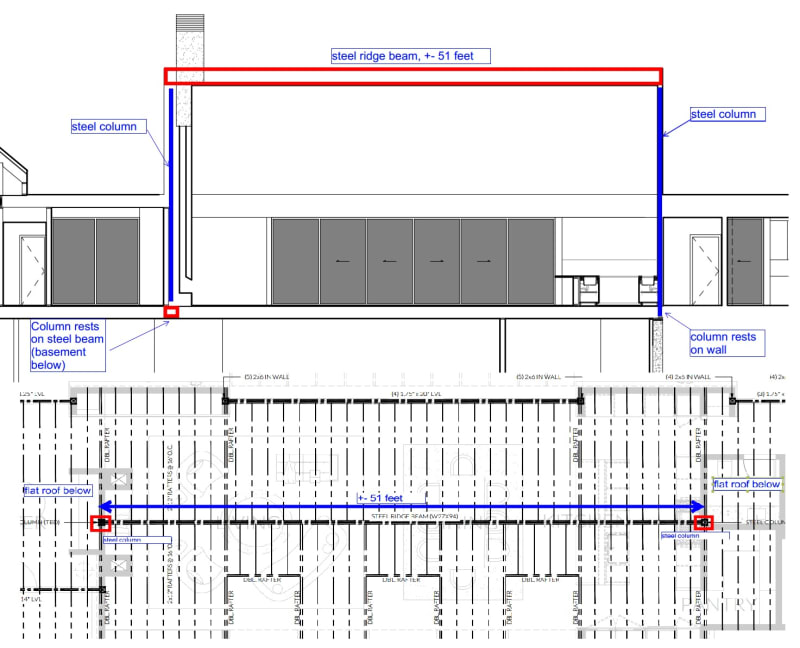Buleeek
Structural
- Sep 5, 2017
- 98
Hello,
I am working on a residential house with a very long (51 feet) steel ridge beam (cathedral ceiling). The gravity loads are +- 500 plf. I am looking for some opinions on how to properly connect the steel members to each other and if there are any other things to consider when such a big and long beam serves as a ridge beam in a residential home (deflection, overall stability, etc). See attached. Thank you.
I am working on a residential house with a very long (51 feet) steel ridge beam (cathedral ceiling). The gravity loads are +- 500 plf. I am looking for some opinions on how to properly connect the steel members to each other and if there are any other things to consider when such a big and long beam serves as a ridge beam in a residential home (deflection, overall stability, etc). See attached. Thank you.

